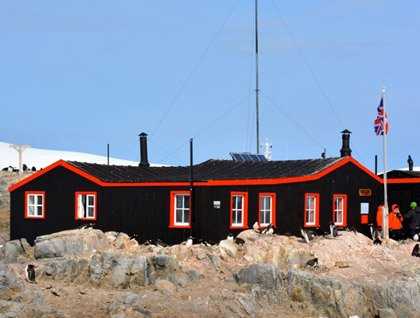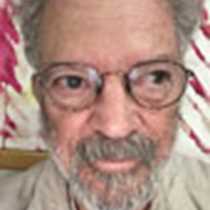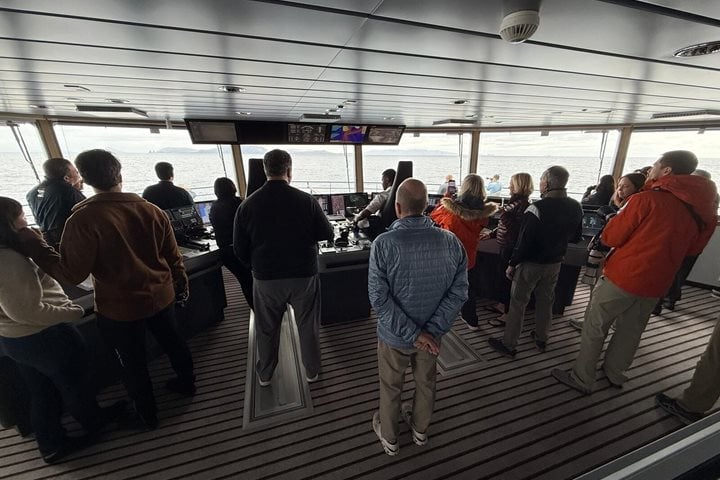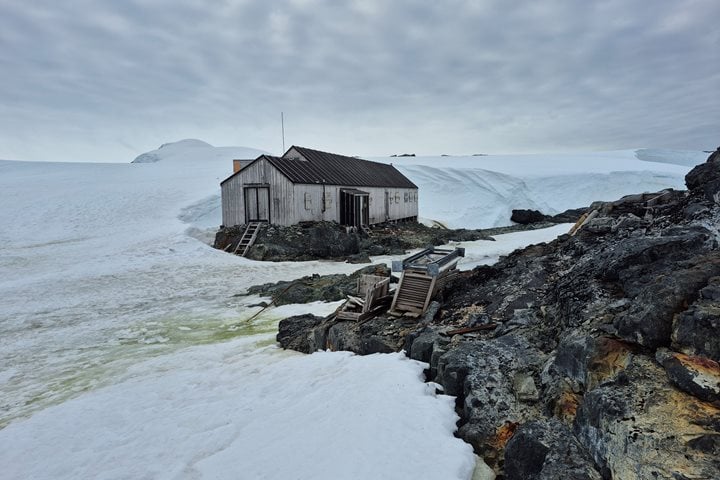This morning I woke up with the ship already anchored at Port Lockroy. Try as I might, it was impossible to tell whether or not I was on some high alpine lake in the middle of winter… there was no obvious egress to open water, to the ocean. But, having been here before, I know that Port Lockroy is a very protected harbor. It is almost completely surrounded by Wiencke Island in the Palmer Archipelago, protected from seas but not necessarily katabatic winds. No place down here really is, after all.
Port Lockroy was used as a protected anchorage by whalers from about 1911 through 1931 and there is an abundance of large bones here both on land and beneath the surface of the water. In 1944, during WWII, the British established one of their ‘secret’ bases here to monitor suspected German activity in this remote area of the world. Station A was built on tiny Goudier Island overlooked by towering mountain peaks and tidewater glaciers. After the war Station A continued as a British research station until it was abandoned in 1961.
Fortunately, this bit of Antarctic history was renovated in the mid 90s and is now a museum, complete with a gift shop and a post office operated by the United Kingdom Antarctic Heritage Trust. Yes, you can mail letters and post cards from here and eventually they will show up to their destination, traveling first by ship to the Falkland Islands, then by plane to the United Kingdom. Many of us took advantage of this unique postal location- “My grandparents went to Antarctica and all I got was a postcard! Pretty neat stamp though…”
There are limits to the number of people who can be on Goudier Island at one time, which is a good thing because it is not a very large place. Also, there is a Gentoo penguin colony that occupies most of the island, including the edges and sometimes the walkways around the station. Part of the colony is off limits to visitors as part of a long-term study to access the impact of tourism on wildlife, so far I have been told there is not a problem.
To keep the morning exciting, we also make a simultaneous landing on nearby Jougla Point where there are yet more penguins, nesting shags and whalebones. We had the extra bonus today of a large caving of one of the glaciers causing a bit of a wave at the landing site. There was no harm to our group as there was plenty of time to move people slightly higher up the beach, even those who seemed determined to get very wet for a more dramatic picture of a breaking wave!
At mid-day we began our journey north, into the Drake Passage, en route to Ushuaia, Argentina.







